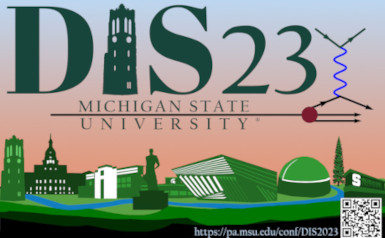Speaker
Description
Excellent particle identification (PID) is one of the key requirements for the central detector of the Electron-Ion collider (EIC). Identification of the hadrons in the final state is important to study how different quark flavors contribute to nucleon properties. A detector with a radial size of only 7-8 cm, which uses the principle of Detection of Internally Reflected Cherenkov light (DIRC), is a very attractive solution to meet these requirements. The high-performance DIRC (hpDIRC) was developed to extend the momentum coverage well beyond the state-of-the-art 3 standard deviations or more separation of $\pi/K$ up to at least 6 GeV/$c$ in the polar angle range $30^{\circ}-145^{\circ}$. Additionally it is expected to provide separation power for p/K up to 10 GeV/$c$, and low momentum e/$\pi$. The key element of the hpDIRC detector is a custom-made 3-layer compound lens used to focus Cherenkov photons produced by charged tracks to small pixel-size photo-sensors leading to measure the position and time of the photons with great precision and finally identify the charged particle. hpDIRC detector was selected for the baseline design of the central region of the ePIC detector. The advanced R&D program for the hpDIRC is focused on physics based simulation studies of performance, including magnetic fields and backgrounds. Hardware R$\&$D is focused on prototype program at newly assembled Cosmic Ray Telescope (CRT) at Stony Brook University (SBU) and BaBar bars validation at JLab. In this talk an overview of the hpDIRC detector development will be presented.
| Submitted on behalf of a Collaboration? | No |
|---|---|
| Participate in poster competition? | No |
